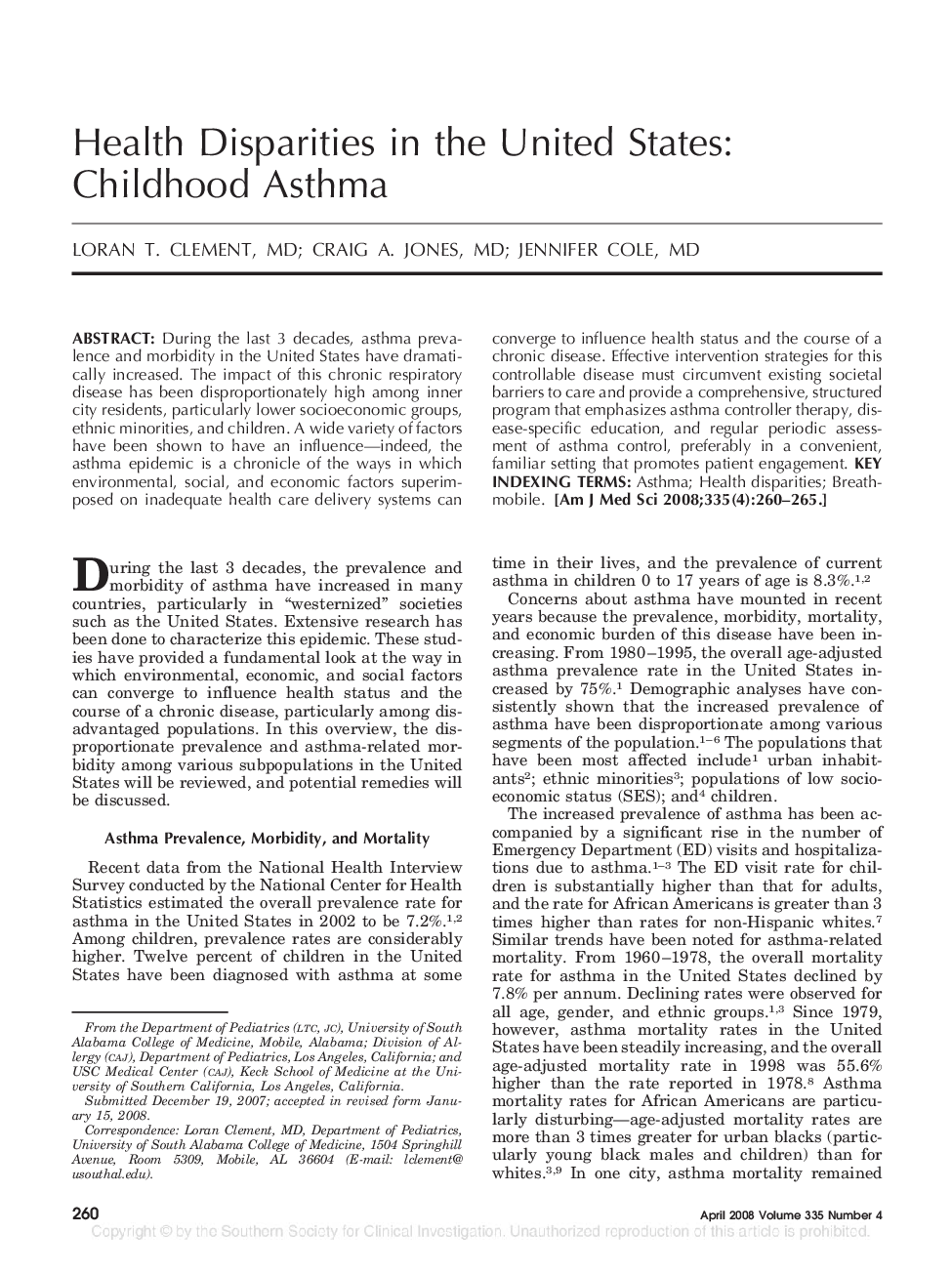| Article ID | Journal | Published Year | Pages | File Type |
|---|---|---|---|---|
| 2865032 | The American Journal of the Medical Sciences | 2008 | 6 Pages |
Abstract
During the last 3 decades, asthma prevalence and morbidity in the United States have dramatically increased. The impact of this chronic respiratory disease has been disproportionately high among inner city residents, particularly lower socioeconomic groups, ethnic minorities, and children. A wide variety of factors have been shown to have an influence-indeed, the asthma epidemic is a chronicle of the ways in which environmental, social, and economic factors superimposed on inadequate health care delivery systems can converge to influence health status and the course of a chronic disease. Effective intervention strategies for this controllable disease must circumvent existing societal barriers to care and provide a comprehensive, structured program that emphasizes asthma controller therapy, disease-specific education, and regular periodic assessment of asthma control, preferably in a convenient, familiar setting that promotes patient engagement.
Keywords
Related Topics
Health Sciences
Medicine and Dentistry
Cardiology and Cardiovascular Medicine
Authors
Loran T. MD, Jennifer MD, Craig A. MD,
